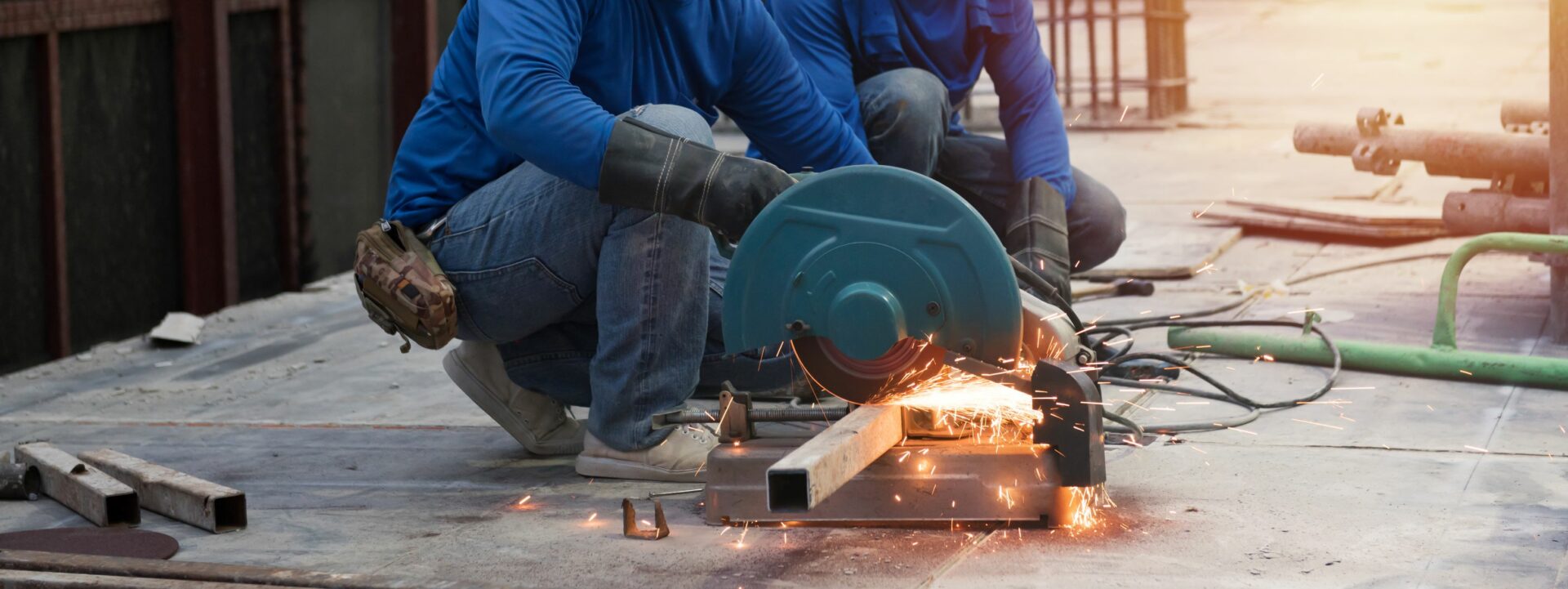Machines can assist in improving production efficiency in the workplace. However, these machines have moving parts, sharp edges, and hot surfaces with the potential to cause severe workplace injuries such as crushed fingers or hands, amputations, burns, or blindness.
Safeguards are essential for protecting workers from these preventable injuries. Any machine part, function, or process that might cause injury must be safeguarded. When the operation of a machine may result in a contact injury to the operator or others in the vicinity, the hazards must be eliminated or controlled.
One or more methods of machine guarding should be provided to protect the operator and other employees in the machine area from hazards. Machine Guarding protects against hazards such as those created by:
- Point of operation
- Power transmission apparatus
- Ingoing nip points
- Rotating parts
- Flying chips/sparks
- Any moving part
OSHA’s Machine Guarding Standard is classified as a “performance standard” because it allows employers the freedom to adopt a guard that meets or “performs” the objective of protecting employees from the hazards associated with the machine in question. In other words, employers are given leeway in adapting the type of guards that can be installed on machines.
General requirements are that guards should be affixed to the machine where possible and secured elsewhere if attachment to the machine is not possible. And of course, the guard cannot be a hazard itself. Types of machines that normally require point of operation guarding include:
- Mills
- Drills
- Grinders
- Power Presses
- Shears
- Saws
- Portable Power Tools
- Jointers
- Guillotine Cutters
Here are some basic rules of thumb (haha.. pun intended) to go by:
- If it moves, turns, spins, reciprocates, cuts, etc., GUARD IT!
- Guard: point of operation, ingoing nip points, pinch points, rotating parts, against flying objects/chips.
- Guards should not be a hazard in and of themselves.
- Guards should not be removed unless working on the machine and Lock Out/Tag Out (LOTO) is in place.
- Ensure guards are put back on after working on machinery.
- Do NOT operate machinery without guards!
Saws
Saws are generally used in woodworking and manufacturing shops. There are many types but the main ones are table saws and radial arm saws. All saws should have blade guards to protect workers from lacerations. Never use a saw without a blade guard.
Shears
Shears are self-contained machines that use a mechanically driven ram that moves a non-rotary blade at a constant rate past the edge of a fixed blade.
Power squaring shears and plate shears cut sheets of metal using either mechanical or hydraulic driven rams for the shearing action. The ram moves a non-rotary blade at a constant rate past the edge of a fixed blade. The operator feeds or places the stock between the blades, ensures it is properly positioned, and activates the cutting cycle with either foot or hand controls. The material hold-down devices, exerting a tremendous amount of force, clamp the stock immediately before the shearing action. Two other types of shears are also used in industry: alligator and guillotine shears. Both types are used to cut metal stock and scrap metal. Guillotine shears also are used for paper and plastic. All of these should be guarded prior to being used.
Jointers
Jointers face and straighten wood and are used primarily to square edges. The operator passes stock over a cylindrical, multiple knife cutting head while keeping the stock flush against a guide.
Milling Machines
A milling machine removes material from a workpiece by rotating a cutting tool (cutter) and moving it into the workpiece. Milling machines, either vertical or horizontal, are used to machine flat and irregularly shaped surfaces of metal and other tough materials, and can be used to drill, bore, and cut gears, threads, and slots.
Power Presses
National Emphasis Program (NEP) sets forth safety directives, policies and procedures to identify and reduce or eliminate amputation hazards in manufacturing industries, including power press brakes.
This is just a few key points to keep in mind. Remember all points of operation, nip points, pinch points, shear points, and cutting actions should be guarded! Give us a call if you have any questions regarding machine guarding. If you need a comprehensive training program check out our DIY in-house training kit, or check out our online training options.
Call us at 866-627-3850 or email us at sales@jjsafetyllc.com to learn more.
